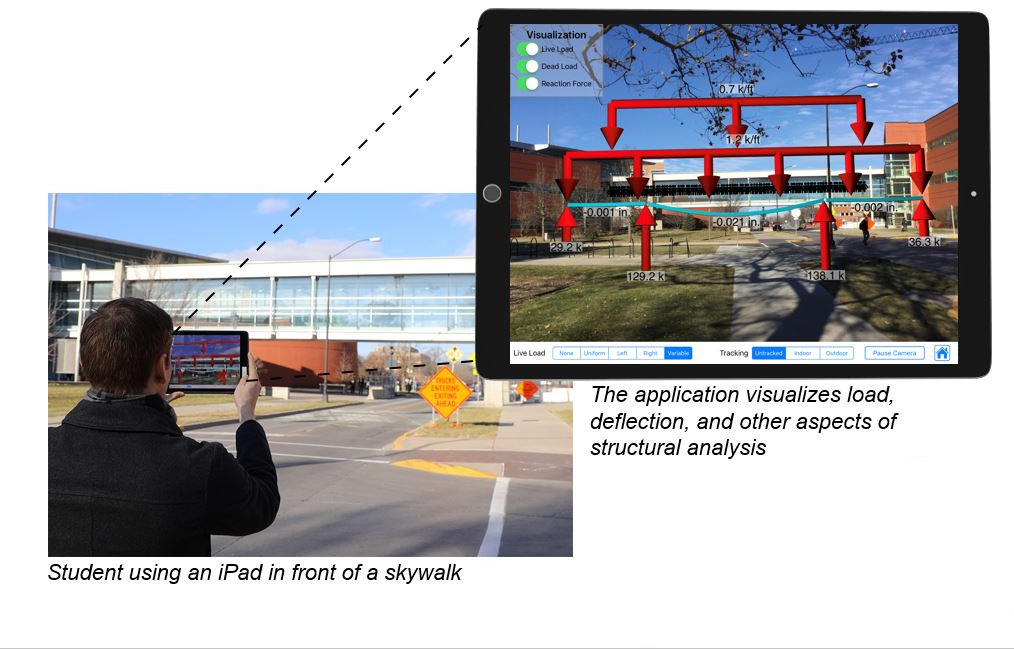
Structural Analysis is an introductory core course that is taught in every civil engineering program as well as in most architectural and construction engineering programs. Previous research unveils students’ deficits in understanding the behavior of structural elements in a three-dimensional (3D) context due to the shortcomings of traditional lecturing approaches, which put too much emphasis on the analysis of individual structural members, thereby falling short in providing a solid, easy-to-follow, and holistic approach to analyzing complex structures with a large number of interconnected elements. In our project, a new application is being designed for structural analysis that incorporates mobile augmented reality (AR) and interactive 3D visualization technology. The goal of the project is to enhance the contents used in structural analysis textbooks and on worksheets by visualizing discrete structural members employing AR along with interactive 3D models in order to illustrate how the structures behave under different loading conditions. Students can interactively change the load and observe the reaction resulting from this change with the instant feedback provided by the AR interface. Structural analysis concepts such as loads, load paths, trusses, beams, and frames will all be addressed utilizing existing 3D models of various buildings on Iowa States campus.
Improved methods for teaching structural analysis, like the project described, will not only be impactful by increasing understanding and engagement of students in structural analysis classes, but will help prepare students for STEM careers that will be model-centric in the future.